Please note that the financials in this complete free business plan are completely fictitious and may not match the text of the business plan below. This free business plan demonstration purposes only. If you are interested in purchasing the completed editable MS Word and Excel documents for this business plan, please click the button below! Also, the text of the business plan is formatted with a fully automated table of contents.
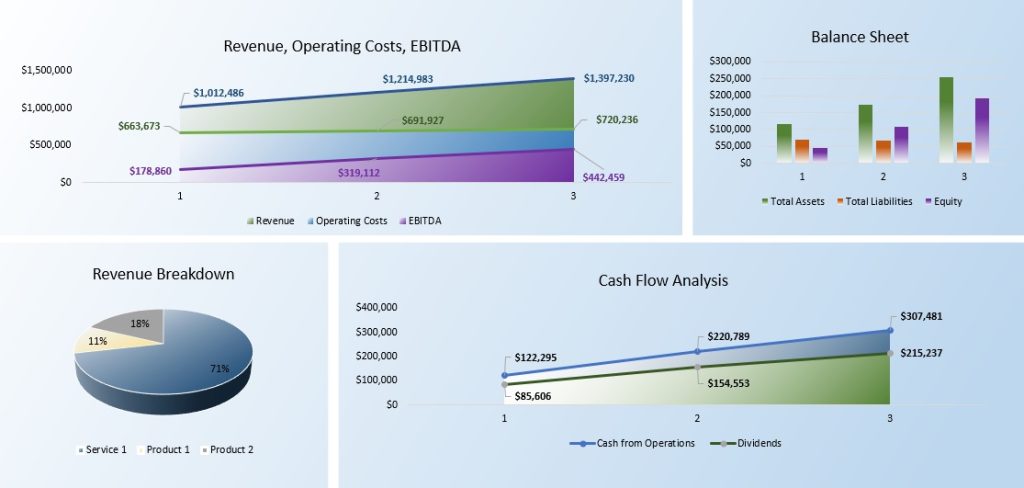
1.0 Executive Summary
The purpose of this business plan is to raise $20,000,000 for the development of a country club while showcasing the expected financials and operations over the next three years. Country Club, Inc. (“the Company”) is a New York based corporation that will provide customers with a massive 36 hole golf course, a private membership restaurant, and a day spa that will be operated on site. The Company was founded by John Doe.
1.1 Operations
As stated above, the business intends to develop an expansive country club facility that will feature a 36 hole golf course, private membership restaurants services, an onsite day spa, and many other ancillary services that are in demand among people that frequent country clubs.
The business intends to solicit membership fees (including initiation fees) as the Country Club facility nears its completion. The business will also generate very high gross margins generated from the services mentioned above.
The third section of the business plan will further describe the services offered by the Country Club.
1.2 The Financing
Mr. Doe is seeking to raise $20,000,000 from an investor(s). Mr. Doe expects to sell a 50% equity interest in the business in exchange for the requisite capital. The tentative terms of this agreement can be found in the second section of the business plan. The financing will be used for the following:
Development of the Company’s Country Club location.
Financing for the first six months of operation.
Capital to purchase FF&E for the Country Club.
1.3 Mission Statement
Country Club, Inc.’s mission is to become a well known golf course facility and family entertainment destination for wealthier residents living within the Company’s targeted market.
1.4 Management Team
The Company was founded by John Doe. Mr. Doe has more than 10 years of experience in the hospitality industry. Through his expertise, he will be able to bring the operations of the business to profitability within its first year of operations.
1.5 Sales Forecasts
Mr. Doe expects a strong rate of growth at the start of operations. Below are the expected financials over the next three years.
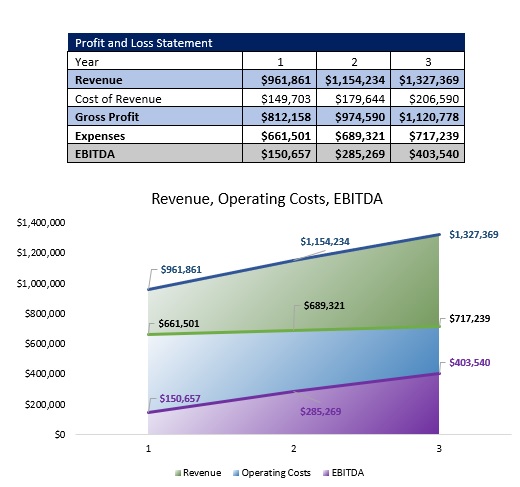
1.6 Expansion Plan
The Founder expects that the business will aggressively expand during the first three years of operation. Mr. Doe intends to implement marketing campaigns that will effectively target individuals that are interested in becoming members of a country club.
The Company may seek to develop additional Country Club properties after the third to fifth year of operation.
2.0 Company and Financing Summary
2.1 Registered Name and Corporate Structure
Country Club, Inc. The Company is registered as a corporation in the State of New York.
2.2 Required Funds
At this time, the Country Club requires $20,000,000 of equity funds. Below is a breakdown of how these funds will be used:
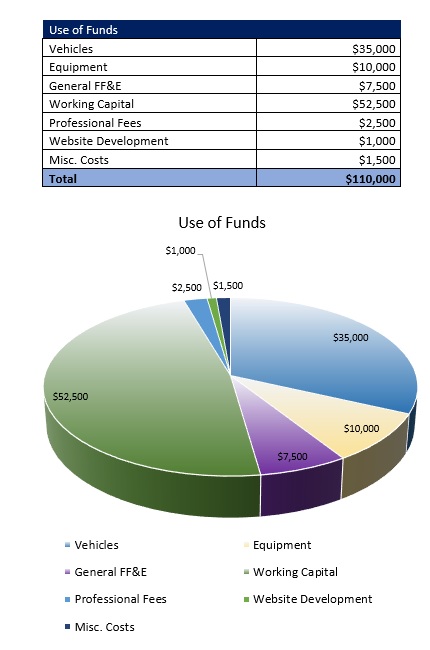
2.3 Investor Equity
At this time, the Company is seeking to sell a 50% equity interest in the business for the requisite capital sought in this business plan. The investor(s) will also receive a seat on the board of directors and a regular stream of dividends starting in the first year of operation. Please reference the Company’s private placement memorandum for more information regarding the specifics of this investment.
2.4 Management Equity
After the requisite capital is raised, Mr. Doe will retain a 50% ownership in the business.
2.5 Exit Strategy
The Management has planned for three possible exit strategies. The first strategy would be to sell the Company to a larger entity at a significant premium. Since, country club industry maintains a moderate risk profile once the business is established; the Management feels that the Company could be sold for ten to fifteen times earnings.
The second exit scenario would entail selling a portion of the Company via an initial public offering (or “IPO”). After a detailed analysis, it was found that the Company could sell for twenty times earnings on the open market depending on the business’s annual growth rate and strength of earnings. However, taking a company public involves significant legal red tape. Country Club, Inc. would be bound by the significant legal framework of the Sarbanes-Oxley Act in addition to the legal requirements set forth in form S1 of the Securities and Exchange Commission. The Company would also have to comply with the Securities Act of 1933 and the Exchange Act of 1934.
3.0 Operations
3.1 Golf Course
As stated in the executive summary, the Country Club will feature a full 36 hole golf course (two different 18 hole courses) that will be of PGA championship quality.
Currently, Management is reviewing applications from a number of professional golfers and professional golf course designers that will assist the business in developing a layout of a golf course that will be of moderate difficulty for Country Club members.
3.2 Country Club Restaurant
As part of the members’ enrollment, they will have access to a highly developed club house that will feature a high end restaurant. No cash will change hands when members use the Company’s Country Club facility. All accounts will be billed on a monthly basis to members. At this time, Management is seeking to hire an outstanding chef to develop the menu, restaurant layout, and general operations of the Country Club Restaurant.
3.3 Day Spa
Country Club, Inc. will also have a full service day spa that will provide massage therapy services, manicures/pedicures, as well as other spa services including, but not limited to:
Facials
Body Waxing
Anti-Aging Treatments
Aromatherapy
4.0 Strategic and Market Analysis
4.1 Economic Outlook
This section of the analysis will detail the economic climate, the country club industry, the customer profile, and the competition that the business will face as it progresses through its business operations.
Currently, the economic market condition in the United States is moderate. Unemployment rates have declined while asset prices have risen substantially. It should be noted that an economic recession may have an impact on the Country Club’s ability to secure new membership on an ongoing basis.
4.2 Industry Analysis
Within the United States, there are approximately 12,261 country clubs that operate on a for profit basis or a not for profit basis. Each year, these businesses generate approximately $20 billion of revenues while providing jobs to more than 312,000 people. Annual payrolls in each of the last five years have exceeded $8 billion.
This is a mature industry, and the expected future growth rate is expected to wane as the demand for country club lifestyles have declined sharply given the current economic climate. Additionally, as many younger people now travel more frequently, the demand for new members is expected to decline over the next ten years. However, country clubs may be able to recruit new members from the baby boomer population.
4.3 Customer Profile
The Country Club’s average client will be an upper middle class man or woman that frequently enjoys playing golf, tennis, and belonging to a membership club. Common traits among clients will include:
Annual household income exceeding $75,000
Will spend $20,000 on membership fees and usage of the Country Club’s facilities.
Lives within 10 miles of the Company’s Country Club facility.
4.4 Competitive Analysis
This is one of the sections of the business plan that you must write completely on your own. The key to writing a strong competitive analysis is that you do your research on the local competition. Find out who your competitors are by searching online directories and searching in your local Yellow Pages. If there are a number of competitors in the same industry (meaning that it is not feasible to describe each one) then showcase the number of businesses that compete with you, and why your business will provide customers with service/products that are of better quality or less expensive than your competition.
5.0 Marketing Plan
The Country Club intends to maintain an extensive marketing campaign that will ensure maximum visibility for the business in its targeted market. Below is an overview of the marketing strategies and objectives of the business.
5.1 Marketing Objectives
Develop an online presence by developing a website and placing the Company’s name and contact information with online directories.
Establish relationships with the local community of the target market.
Engage a broad based public relations firm targeted towards wealthy people living within the target market.
5.2 Marketing Strategies
Management intends to use a qualified advertising and marketing firm to help the Country Club reach its intended audience of wealthy people living in the Company’s targeted market. This campaign will include the use of traditional print and media advertising as well as the Internet. Direct advertising campaigns will be of significant importance to the Company as the business is offering its Country Club services to a specified group of upper middle and upper income people.
Timely coverage of the Company and its facilities will be further directed through ongoing press relations, news releases and feature stories targeted at key professional communities and other media outlets. Publicity activities will be designed to generate ongoing coverage about the Country Club in targeted media by providing writers and editors with newsworthy releases, features, stories, briefs, and visual material for their columns and stories. In depth coverage may also be obtained about the Company by hosting in-house interviews to be conducted by our company spokesperson, John Doe.
The Company may also use a number of TV and radio personalities to visit and experience the Country Club so that they may “plug” the facility in lifestyle and travel columns during their respective interviews.
5.3 Pricing
In this section, describe the pricing of your services and products. You should provide as much information as possible about your pricing as possible in this section. However, if you have hundreds of items, condense your product list categorically. This section of the business plan should not span more than 1 page.
6.0 Organizational Plan and Personnel Summary
6.1 Corporate Organization

6.2 Organizational Budget

7.0 Financial Plan
7.1 Underlying Assumptions
The Company has based its proforma financial statements on the following:
Country Club, Inc/ will have an annual revenue growth rate of 16% per year.
The Founder will acquire $20,000,000 of equity funds to develop the facility.
The Country Club property will have an annual appreciation rate of 6% per annum.
7.2 Sensitivity Analysis
In the event of an economic downturn, the business may have a decline in its revenues. Enrolling as a member in a country club is a luxury and during times of deleterious economic conditions, the business may have issues with its top line income. However, the Company is targeting its services towards wealthy people who are less swayed by difficult economic climates. Additionally, the high margins generated by the business will ensure its continued profitability despite moderate decreases in revenue.
7.3 Source of Funds

7.4 General Assumptions

7.5 Profit and Loss Statement

7.6 Cash Flow Analysis
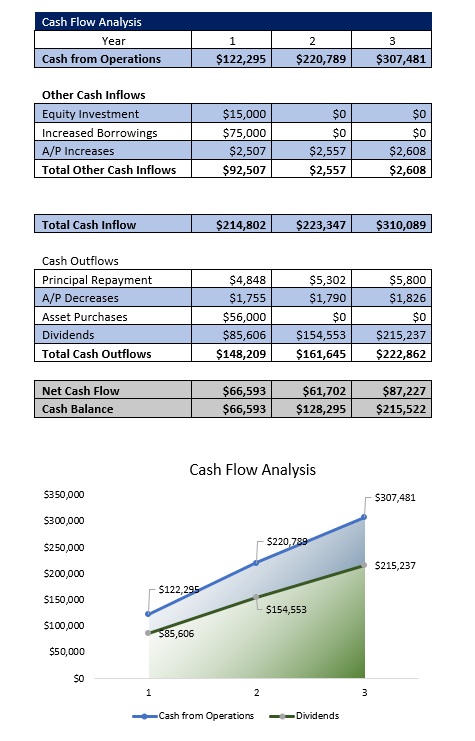
7.7 Balance Sheet

7.8 Breakeven Analysis
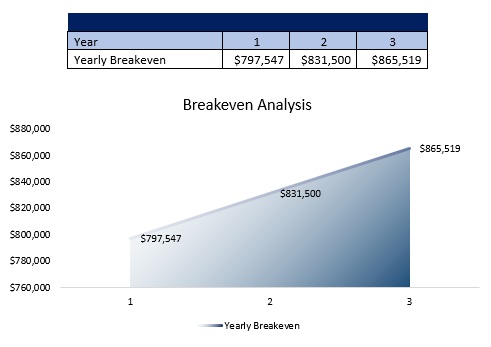
7.9 Business Ratios

